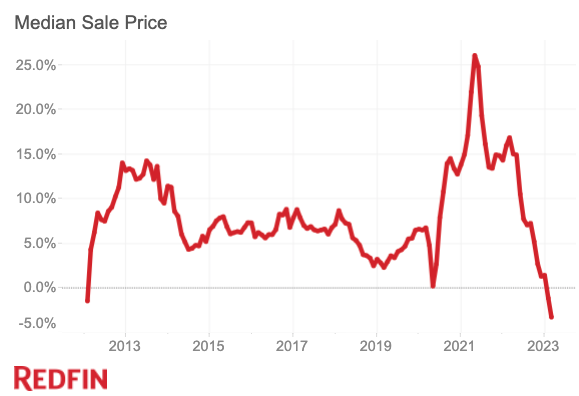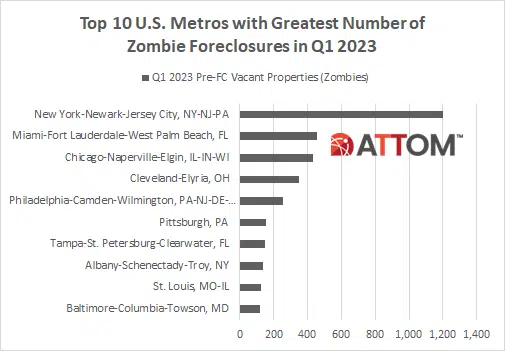From DSNews:
Q1 Foreclosure Activity Trends Upward
ATTOM’s Q1 2023 U.S. Foreclosure Market Reporthas found that a total of 95,712 U.S. properties had foreclosure filings during Q1 of 2023, up 6% from Q4 of 2022, and up 22% year-over-year. The report also shows a total of 36,617 U.S. properties with foreclosure filings in March 2023 alone, up 20% from February 2023’s totals, and up 10% from a year ago—the 23rd consecutive month with a year-over-year increase in U.S. foreclosure activity.
“Despite efforts made by government agencies and policymakers to try and reduce foreclosure rates, we are seeing an upward trend in foreclosure activity,” said Rob Barber, CEO at ATTOM. “This unfortunate trend can be attributed to a variety of factors, such as rising unemployment rates, foreclosure filings making their way through the pipeline after two years of government intervention, and other ongoing economic challenges. However, with many homeowners still having significant home equity, that may help in keeping increased levels of foreclosure activity at bay.”
A total of 65,346 U.S. properties started the foreclosure process in the first quarter of 2023, up 3% from the previous quarter, and up 29% from a year ago. States that had the greatest number of foreclosures starts in Q1 2023 included:
- California (6,867 foreclosure starts)
- Texas (6,764 foreclosure starts)
- Florida (5,724 foreclosure starts)
- New York (4,345 foreclosure starts)
- Illinois (4,006 foreclosure starts)
Those major metros with a population of 200,000 or more that had the greatest number of foreclosures starts in Q1 2023 included:
- New York, New York (4,674 foreclosure starts)
- Chicago, Illinois (3,549 foreclosure starts)
- Los Angeles, California (2,210 foreclosure starts)
- Houston, Texas (2,120 foreclosure starts)
- Philadelphia, Pennsylvania (1,985 foreclosure starts)
Nationwide, one in every 1,459 housing units had a foreclosure filing in the first quarter of 2023. States with the highest foreclosure rates included:
- Illinois (one in every 762 housing units with a foreclosure filing)
- Delaware (one in every 812 housing units)
- New Jersey (one in every 824 housing units)
- Maryland (one in every 897 housing units)
- Nevada (one in every 947 housing units)



